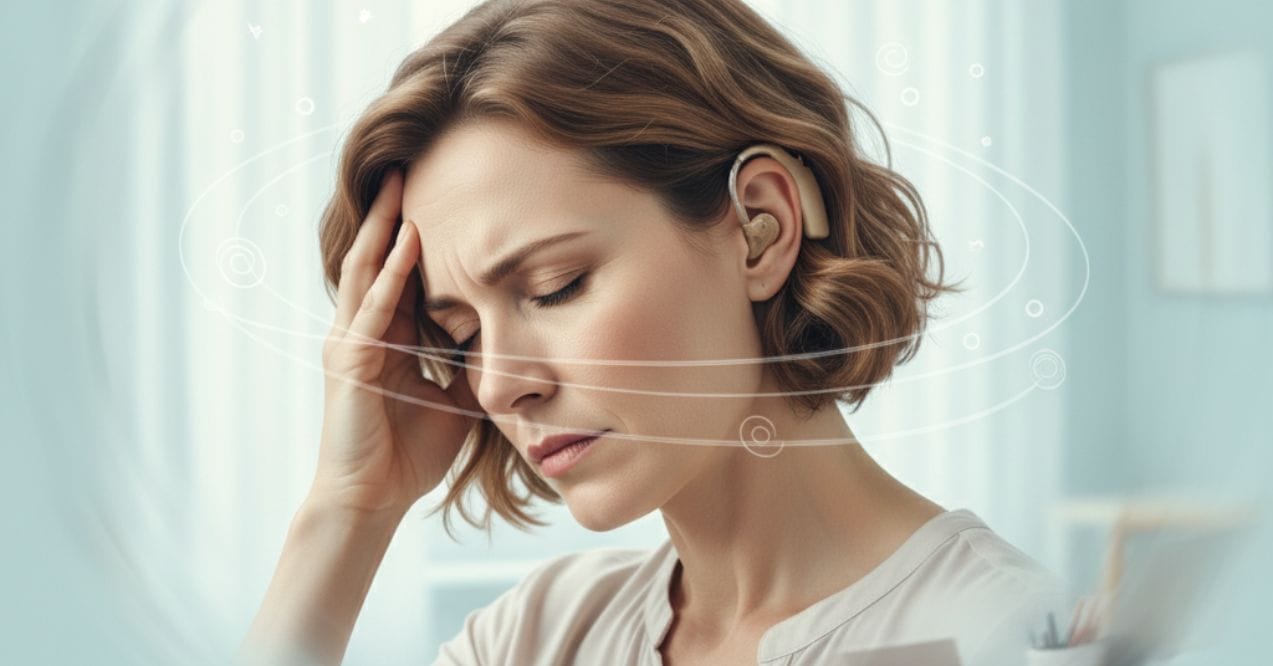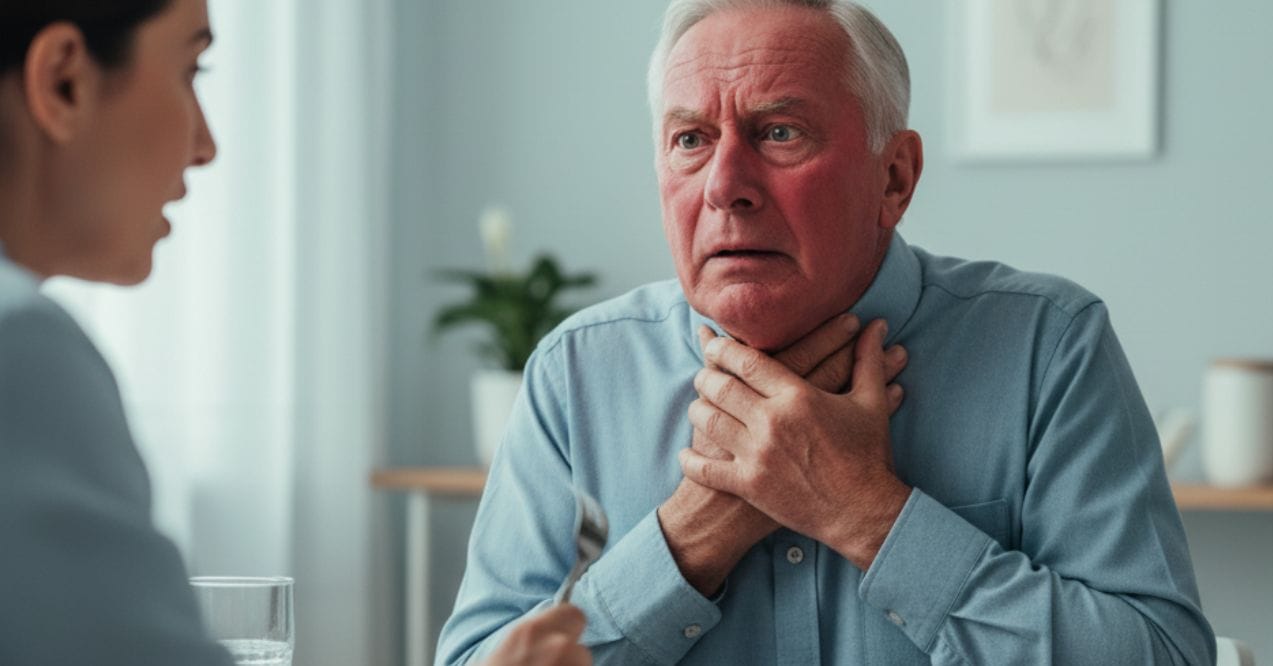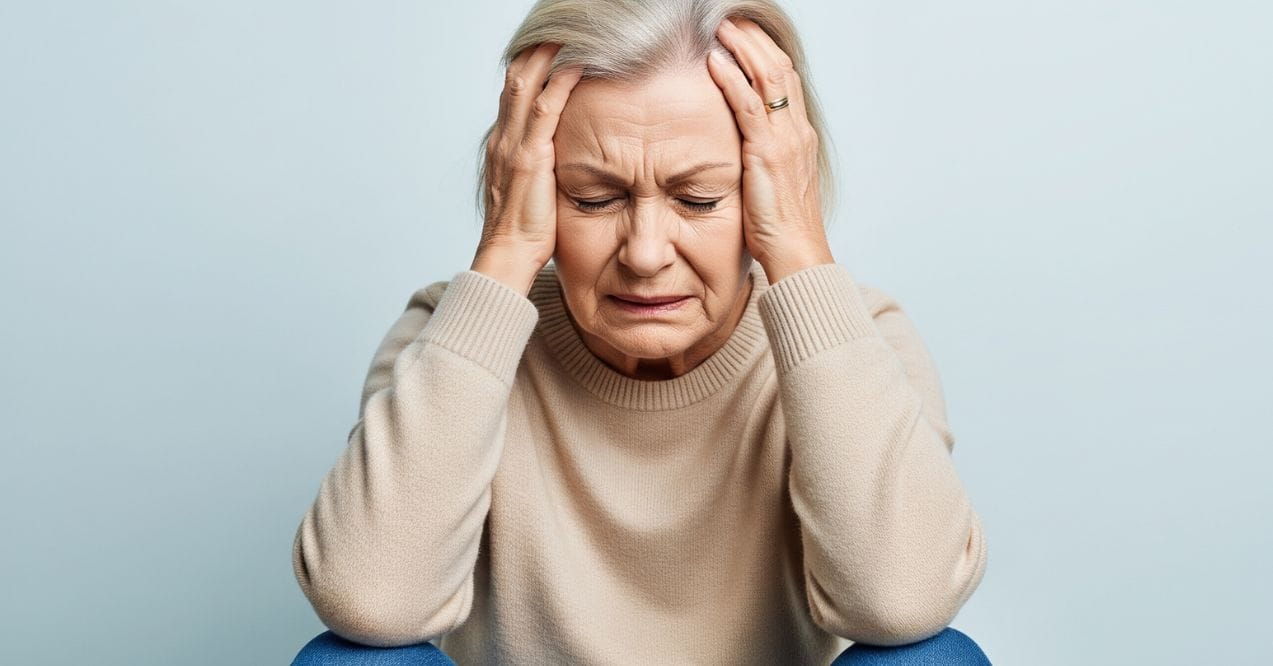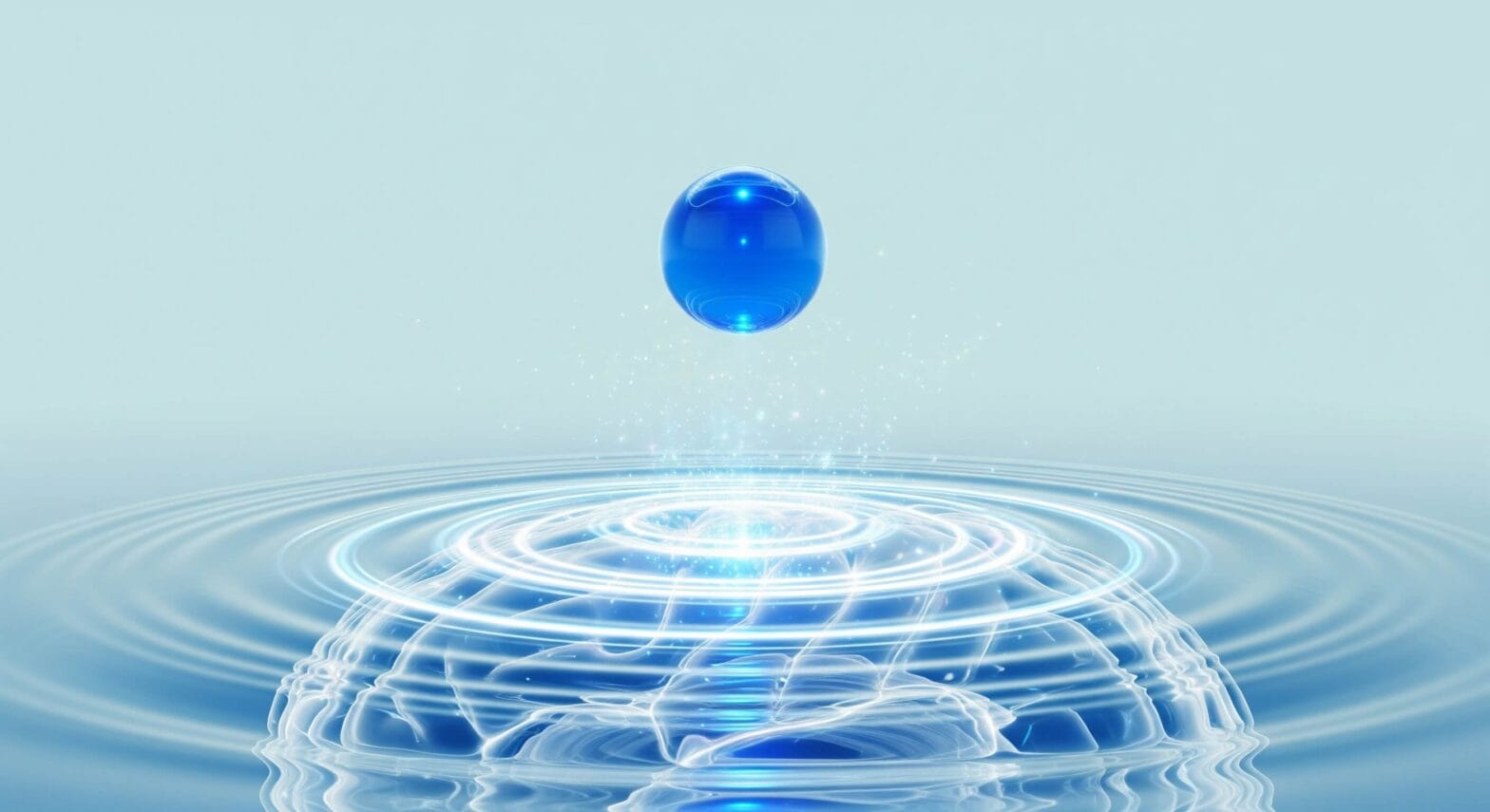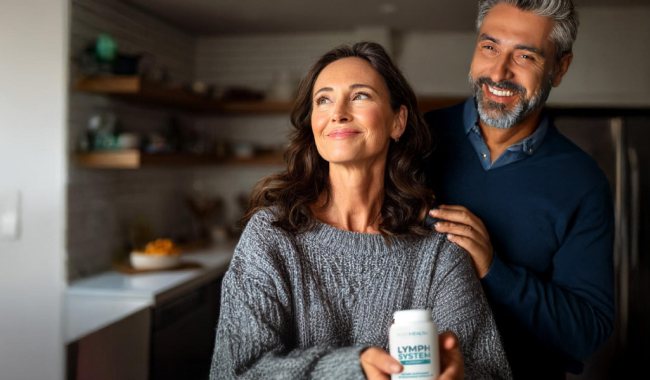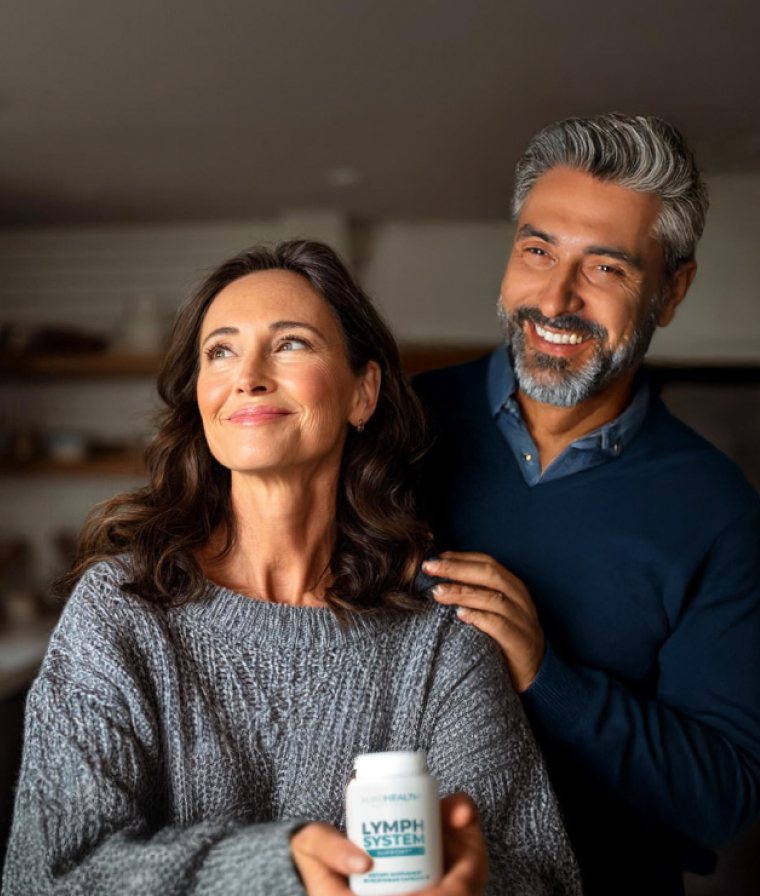5 Causes of Balance Issues in Elderly + Exercises for Stability
As we age, maintaining steady footing becomes increasingly important yet a priority. Balance issues in elderly adults affect millions of people worldwide, impacting daily activities like walking, climbing stairs, or reaching for objects on high shelves. These challenges can make independent living more difficult and may lead to a decrease in physical activity, which can […]
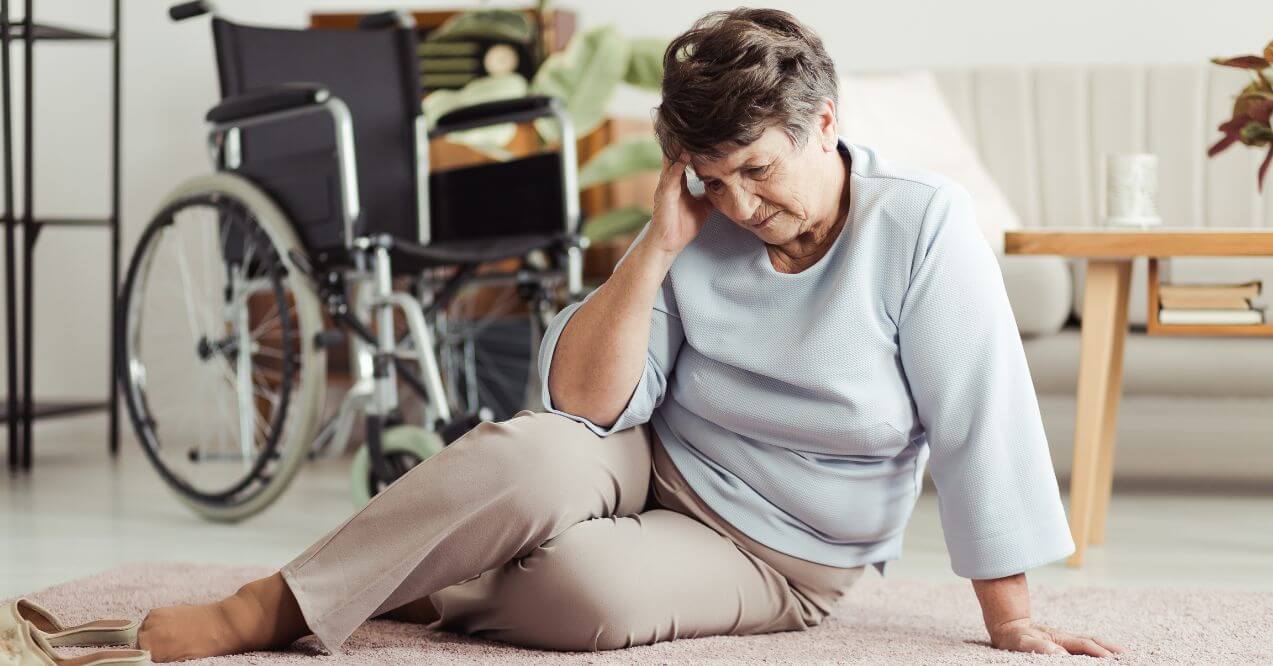

As we age, maintaining steady footing becomes increasingly important yet a priority. Balance issues in elderly adults affect millions of people worldwide, impacting daily activities like walking, climbing stairs, or reaching for objects on high shelves. These challenges can make independent living more difficult and may lead to a decrease in physical activity, which can further affect overall life quality.
In this comprehensive guide, we’ll explore the five main factors that contribute to balance difficulties in older adults, share effective exercises to support stability, and provide practical tips for creating a safer home environment. Whether you’re experiencing occasional unsteadiness or looking to maintain your independence, understanding these concepts can help you take proactive steps toward better balance and mobility.
What Causes Unstableness in Senior Citizens
Understanding what causes balance issues in elderly is crucial for addressing and managing balance concerns. While occasional unsteadiness might seem normal, persistent balance problems in senior citizens can stem from various underlying factors.
1. Inner Ear Problems
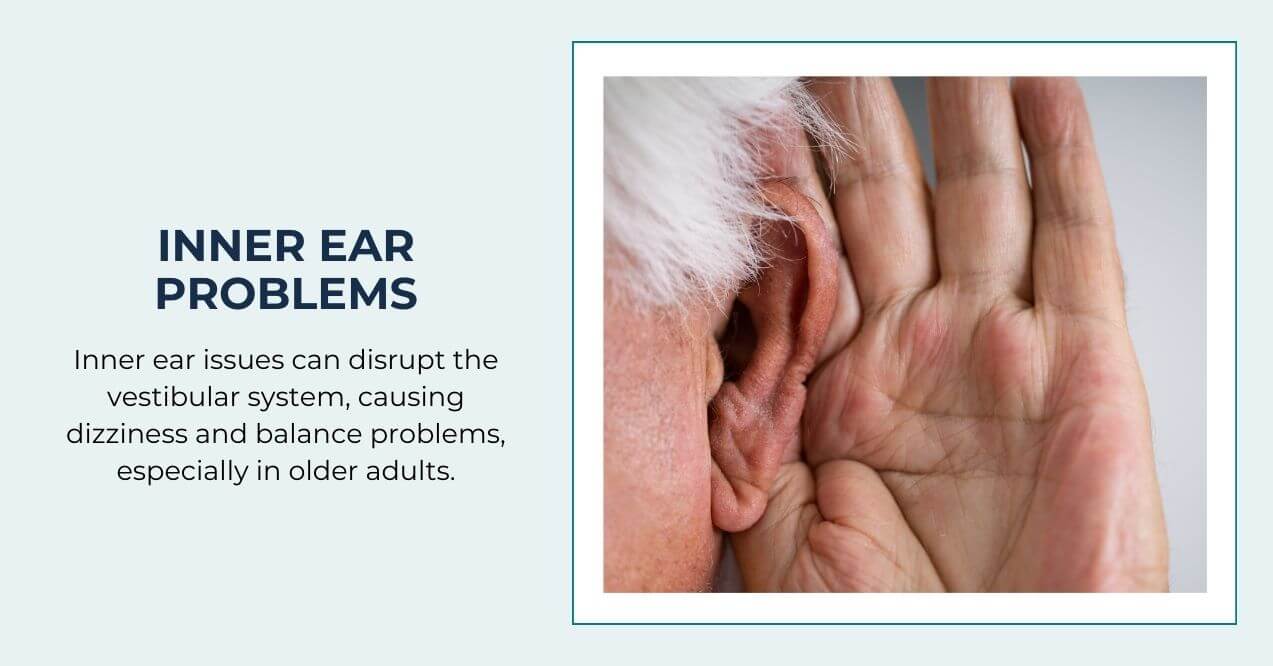
The inner ear plays a vital role in maintaining balance through a complex system called the vestibular system. When this delicate system experiences issues, it can lead to sensations of spinning, tilting, or floating. These symptoms can make simple activities like standing up or walking particularly challenging for older adults. Many seniors experience vertigo – a sensation that the room is spinning – which can significantly impact their stability and confidence in moving around.
2. Vision Impairment
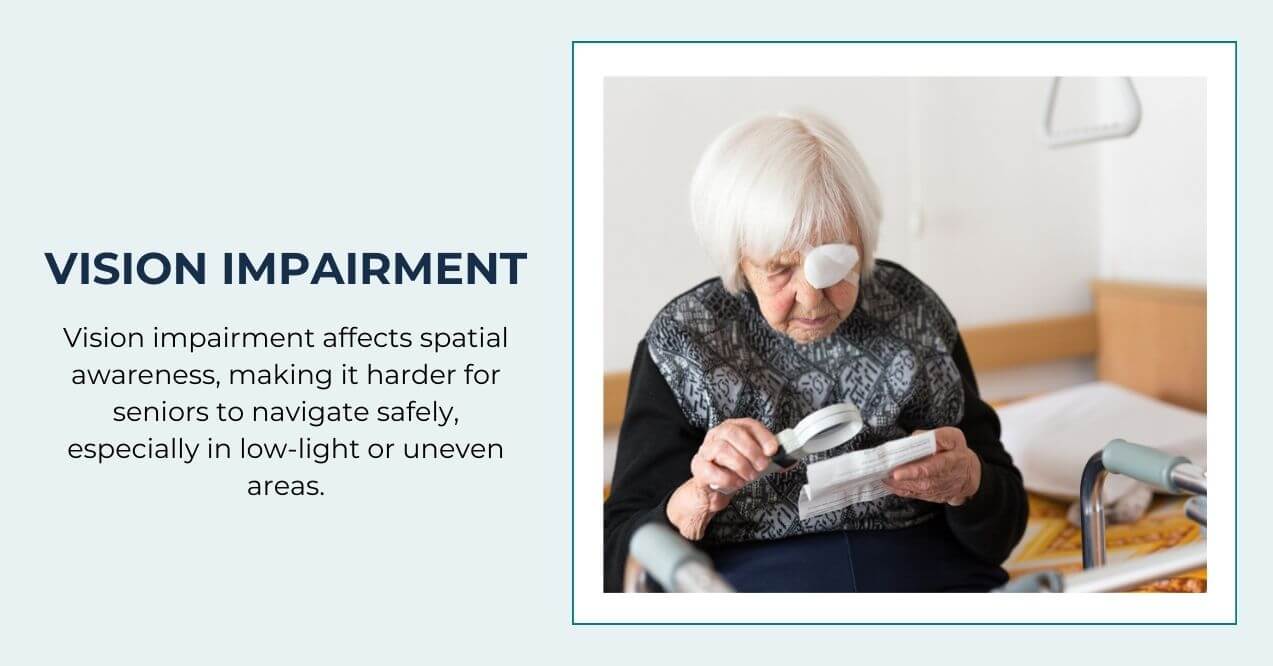
As we age, our visual acuity naturally changes, which can contribute to loss of balance in seniors. Clear vision helps us understand our position in space and identify potential obstacles. When vision becomes impaired, it becomes more challenging to navigate environments safely, especially in low-light conditions or on uneven surfaces. Regular vision check-ups can help monitor these changes and support better balance maintenance.
3. Neurological Conditions
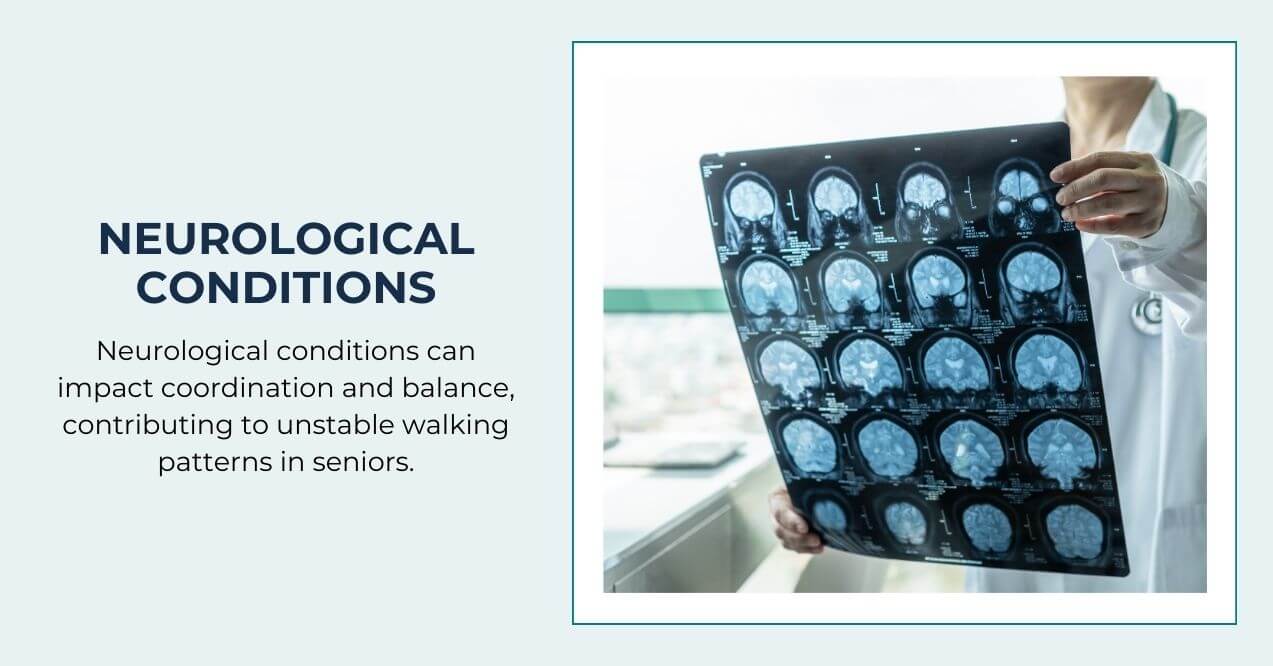
The nervous system acts as our body’s control center for movement and balance. Various neurological conditions can affect how our brain processes information about our body’s position and movement. This can result in coordination difficulties and unstable walking patterns. Many 80 year-old losing balance cases relate to changes in how their nervous system functions.
4. Medication Effects
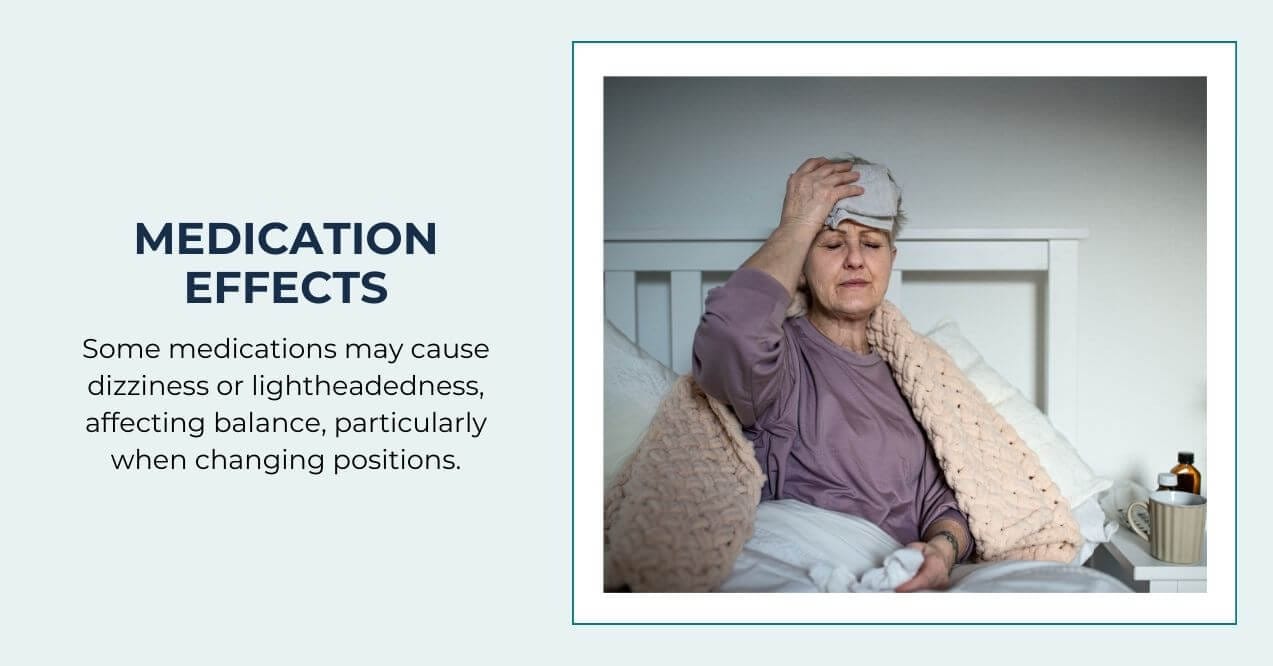
Certain medications may cause side effects that affect balance and coordination. These effects might include lightheadedness or dizziness, particularly when standing up or changing positions quickly. If you notice changes in your balance after starting new medications, it’s important to discuss these concerns with your healthcare provider.
5. Muscle Weakness and Joint Pain
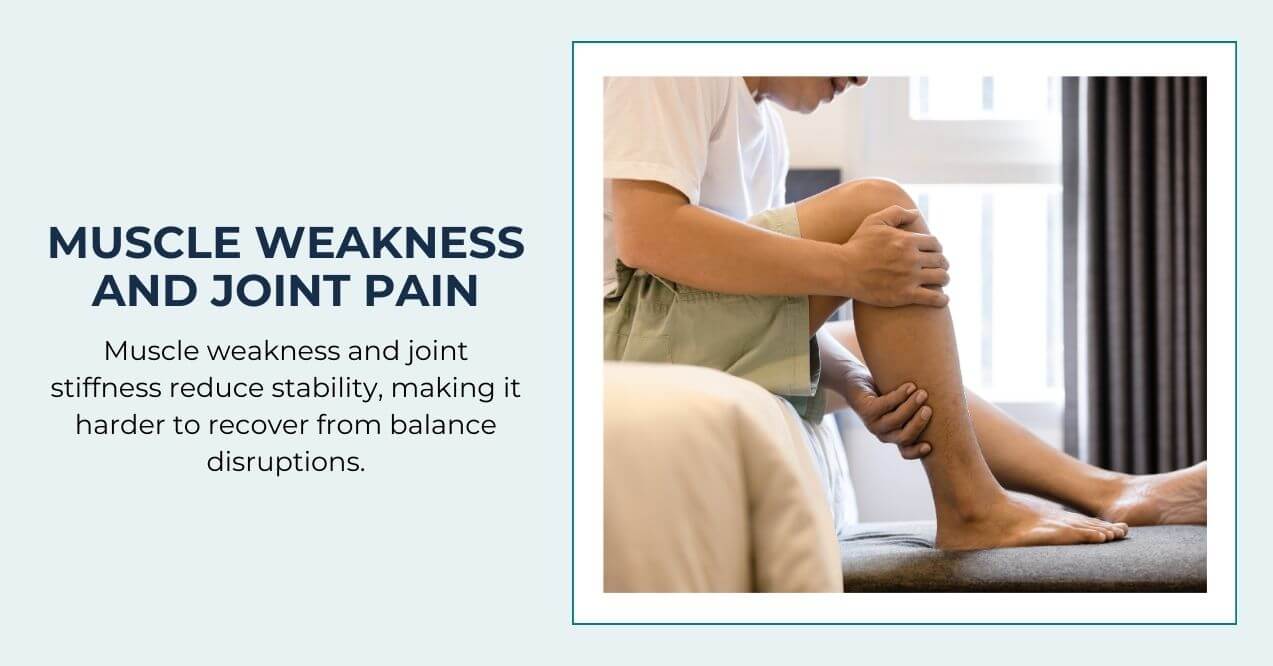
Age-related changes in muscles and joints can significantly impact stability. When muscles become weaker, they may not respond quickly enough to maintain balance when needed. Joint stiffness can also limit range of motion, making it harder to recover from slight losses of balance. Regular physical activity can help maintain muscle strength and joint flexibility, supporting better overall stability.
Diagnosing Balance Disorders
Recognizing the early signs of balance problems in old age can help address stability concerns for better management. Common indicators include:
- Feeling unsteady when walking or standing
- Experiencing a spinning sensation, even while sitting still
- Finding it challenging to walk in darker rooms or on uneven surfaces
- Swaying or stumbling without apparent cause
- Feeling lightheaded during position changes
- Experiencing spatial disorientation
Healthcare specialists may perform various assessments to understand the root cause of balance difficulties. These evaluations often include observing how you walk and stand, testing your ability to maintain stability with eyes open and closed, and checking how well you can track moving objects with your eyes.
A thorough examination might also involve standing on different surfaces to assess how well your body adapts to changing conditions. These insights help create an appropriate plan to support better balance and stability.
Exercises for Improving Stability
Physical activity plays a vital role in maintaining and enhancing stability as we age. If you’ve been wondering why does my body feel heavy during daily activities, these elderly balance exercises focus on three key areas – strength, flexibility, and balance control – to help you move with greater ease.
Exercises for Strength
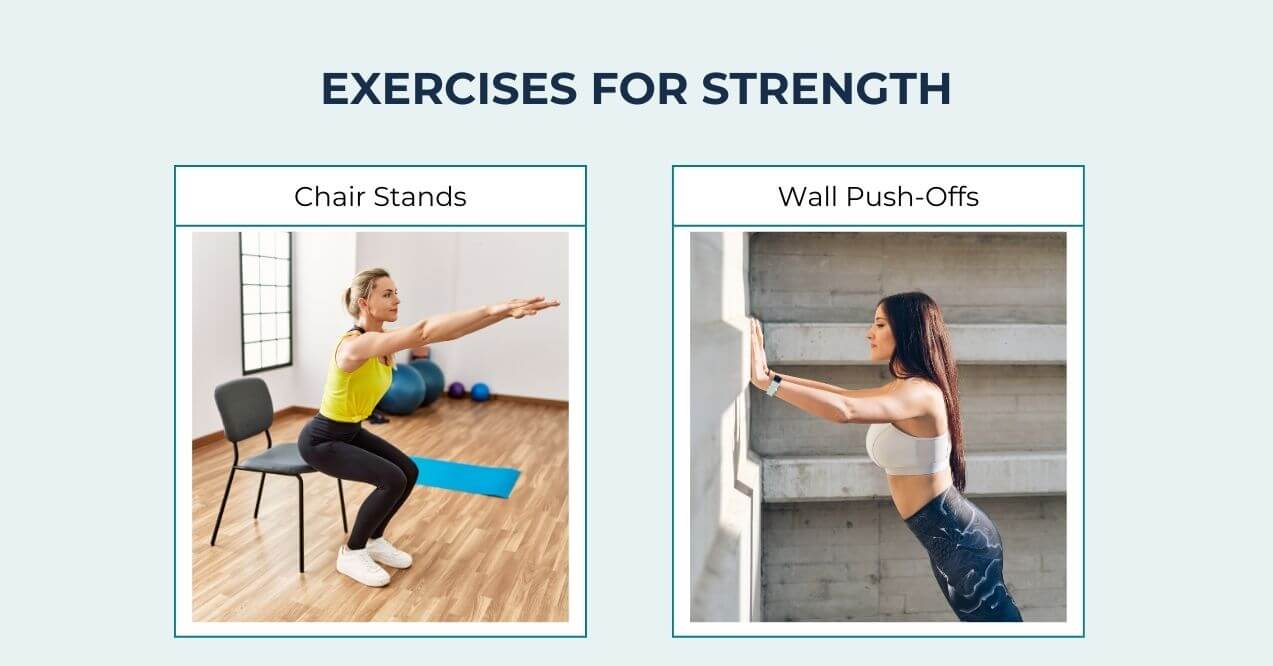
Strong legs provide a solid foundation for better balance. Try these gentle yet effective exercises:
Chair Stands:
- Sit in a sturdy chair with feet flat on the floor
- Lean slightly forward and stand up slowly
- Lower yourself back down with control
- Aim for 8-10 repetitions
- Progress at your own pace
Wall Push-Offs:
- Stand facing a wall, arms-length away
- Place palms flat against the wall
- Bend your elbows to lean toward the wall
- Push back to starting position
- Complete 10-12 repetitions
Exercises for Flexibility
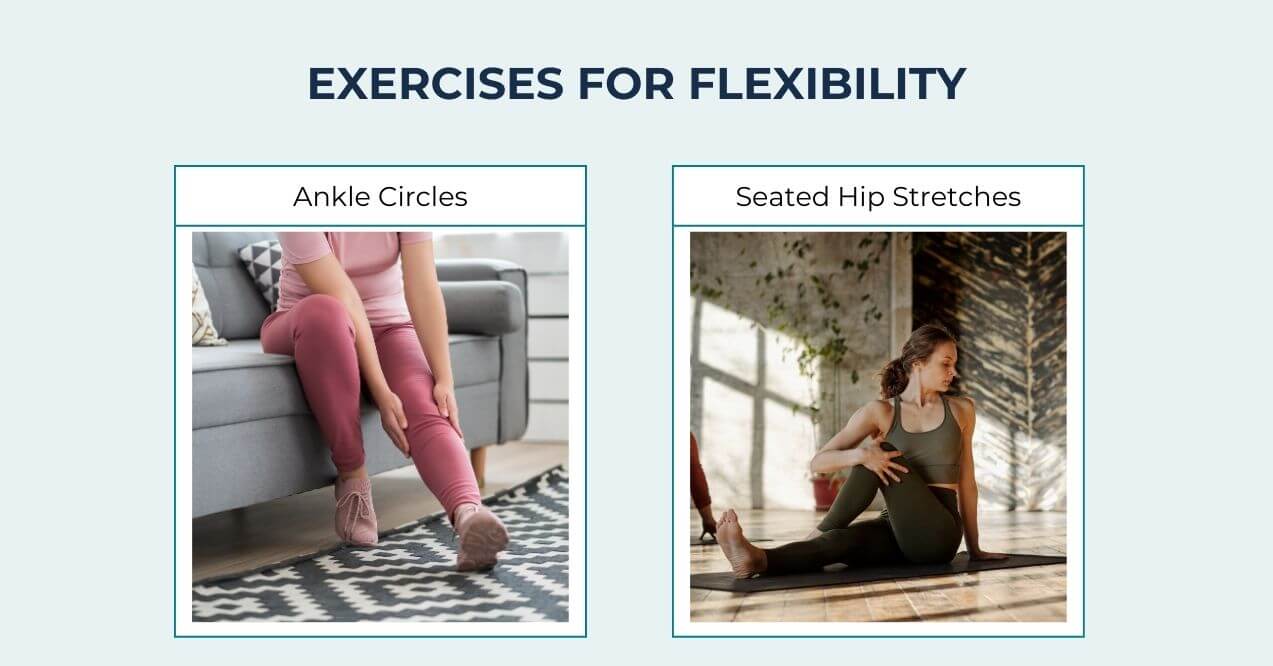
Maintaining joint mobility helps your body respond better to balance challenges:
Ankle Circles:
- Sit in a chair with feet slightly raised
- Rotate each ankle in clockwise circles
- Repeat in counterclockwise direction
- Perform 10 circles in each direction
Seated Hip Stretches:
- Sit with both feet flat
- Cross one ankle over opposite knee
- Hold position for 20-30 seconds
- Switch sides and repeat
Exercises for Balance
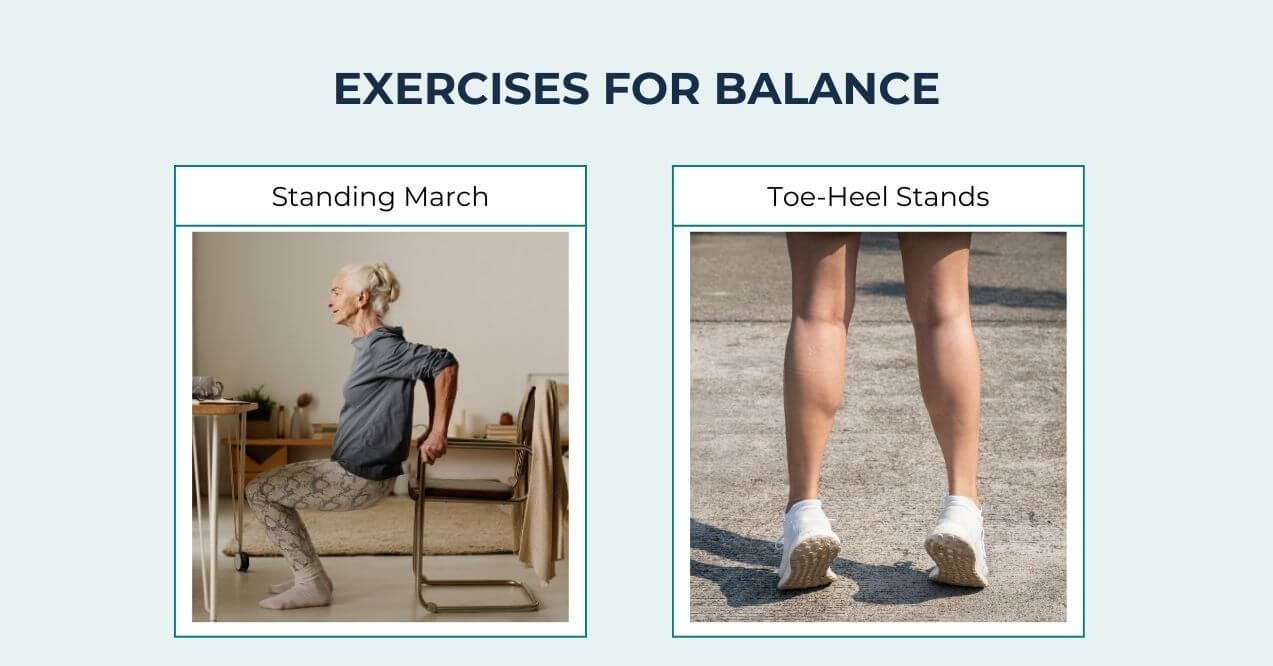
Practice these exercises to improve your stability:
Standing March:
- Stand behind a chair, holding for support
- Slowly lift knees, alternating legs
- Maintain position for 3-5 seconds
- Perform 10 lifts per leg
Toe-Heel Stands:
- Hold onto chair back
- Rise up on toes for 3 seconds
- Rock back to heels for 3 seconds
- Repeat 10 times
Remember to move slowly and mindfully during these exercises. If you feel unsteady at any point, take a break or modify the movement to suit your comfort level
Tips for Preventing Falls at Home
Creating a safer home environment is essential for maintaining independence and stability. Here are practical ways to enhance your living space:
In Your Living Areas:
- Clear walkways of any obstacles, including loose rugs or electrical cords
- Ensure adequate lighting in all rooms, especially at night
- Install motion-sensor lights for better visibility
- Keep frequently used items within easy reach
- Consider placing sturdy handrails along hallways
In Your Bathroom:
- Use non-slip mats both inside and outside the shower
- Install grab bars near the toilet and shower
- Keep the floor dry and clean
While creating a safer environment is essential, supporting your body from within can also make a difference in maintaining overall stability. Essential nutrients like Magnesium contribute to normal muscle function, while Vitamin C and Zinc play vital roles in supporting your body’s natural systems. Blood Sugar Formula combines these key nutrients in a convenient daily supplement, making it easier to maintain your wellness routine while focusing on stability and independence.

Remember, small changes in your home environment, combined with proper nutrition, can make a significant difference in maintaining your independence and stability.
When to Seek Professional Help
While occasional unsteadiness is common as we age, certain situations call for prompt attention from a healthcare provider. If you experience frequent falls, sudden changes in balance, or persistent dizziness lasting more than a day, reach out for professional guidance.
Other important signs include feeling unsteady while sitting still, experiencing room-spinning sensations, or noticing changes in your walking pattern. Seeking professional guidance can provide insights into balance concerns and potential management options.
Final Thoughts
Managing balance issues in elderly adults requires a proactive approach combining home safety, physical activity, and proper nutrition. By understanding common causes of unsteadiness and taking steps to address them, you can maintain your independence and confidence in daily activities. Remember that staying active, creating a safer home environment, and supporting your body with proper nutrition are key steps toward better stability and overall well-being.
Early signs include feeling unsteady when walking, difficulty getting up from chairs, swaying while standing still, and needing to hold onto walls or furniture while moving. You might also experience dizziness during position changes.
Yes, older adults can improve their balance through consistent exercise and proper support. Regular physical activity, especially exercises focusing on strength, flexibility, and balance control, can help enhance stability and coordination.
Practice simple exercises like standing on one foot while holding a chair, walking heel-to-toe along a wall, gentle yoga poses, and performing sit-to-stand movements from a sturdy chair. Regular movement throughout the day also helps.
The single-leg stance is considered highly effective. Start by holding onto a chair, lift one foot slightly off the ground, and maintain the position. Gradually increase duration and reduce support as balance improves.
Choose shoes with non-slip soles, good arch support, and low, wide heels. Ensure they fit properly with enough room for toes. Athletic shoes or walking shoes with secure fastening (laces or straps) work well.
Sign up for our Healthy Living newsletter!
Advertisement. This site offers health, wellness, fitness and nutritional information and is designed for educational purposes only. You should not rely on this information as a substitute for, nor does it replace, professional medical advice, diagnosis, or treatment. If you have any concerns or questions about your health, you should always consult with a physician or other health-care professional. Do not disregard, avoid or delay obtaining medical or health related advice from your health-care professional because of something you may have read on this site. The use of any information provided on this site is solely at your own risk.





